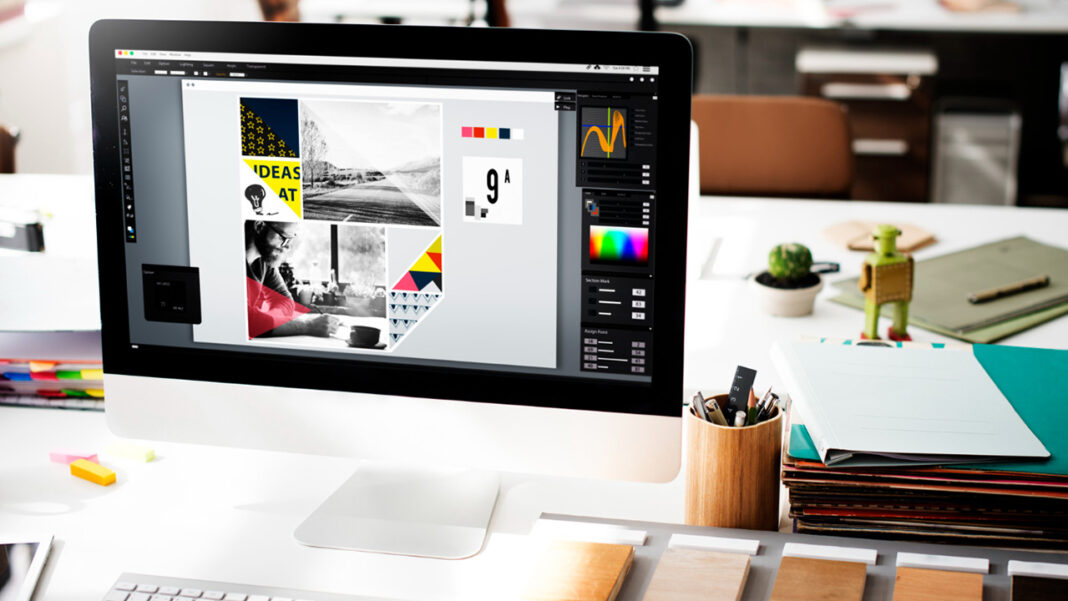The world of graphic design can be intimidating for beginners. With so many tools, techniques, and principles to learn, it’s easy to feel overwhelmed. Don’t worry – this article will provide you with essential tips that will help you become a better designer in no time. So let’s dive into these fundamental graphic design tips for newbies.
Understand the basic design principles
Before you start creating amazing designs, it’s crucial to understand the basic principles that govern good design. These include:
- Contrast: The difference between elements to create visual interest or emphasize specific areas of a design.
- Repetition: Repeating elements, such as shapes, colors, or fonts, to establish a sense of unity and consistency.
- Alignment: Arranging elements in a way that creates order and structure.
- Proximity: Grouping related items together to create a visual connection between them.
- Balance: Distributing elements evenly to create a feeling of stability and harmony.
- Space: Utilizing empty areas within a design to give elements room to breathe and prevent clutter.
Once you’re familiar with these principles, you’ll have a solid foundation to build upon as you develop your design skills.
Master typography
Typography is one of the most important aspects of graphic design. A well-chosen font can make all the difference in conveying your message effectively. Here are some key tips for mastering typography:
Select appropriate fonts
With thousands of fonts available, it can be tempting to get carried away and use several different ones in a single design. However, this usually leads to a cluttered and confusing result. Instead, aim for simplicity by sticking to one or two fonts that complement each other.
Practice font pairing
Font pairing is the art of combining different fonts in a way that looks visually appealing and creates hierarchy within your design. To achieve successful font pairings, try:
- Using fonts from the same family.
- Pairing serif fonts with sans-serif fonts.
- Mixing fonts with contrasting weights and styles.
Pay attention to alignment
Alignment refers to how text is positioned on the page. Proper alignment helps create order and structure in your design. As a general rule, left-aligning text is the most legible option for large blocks of copy, while centered or right-aligned text can work well for headings and captions.
Embrace white space
White space, also known as negative space, is the empty area surrounding the elements in your design. Many beginners make the mistake of trying to fill every inch of their canvas with content. However, effective use of white space can actually improve your design’s readability and overall appeal. So remember: sometimes less really is more.
Choose color wisely
The colors you choose for your design can greatly impact its overall mood and effectiveness. Here are some tips for working with color:
Understand color theory
Color theory is the study of how colors interact and affect one another. It’s essential to understand the basics, such as the color wheel and color harmonies, to create visually pleasing designs.
Consider the psychology of color
Different colors can evoke different emotions and associations, so it’s important to choose colors that align with your design’s intended message. For example, red can signify passion or urgency, while blue often represents calmness and trustworthiness.
Create a cohesive color scheme
Consistency is key when it comes to color, so stick to a limited palette to ensure your design feels unified. You can use tools like Adobe Color CC or Coolors.co to generate harmonious color schemes based on your chosen hues.
Learn from the pros
One of the best ways to improve your design skills is by studying the work of successful designers. This will help you:
- Gain inspiration for your own projects.
- Understand how professional designers apply design principles in real-life scenarios.
- Develop an eye for what makes a design visually appealing and effective.
Don’t limit yourself to merely admiring other designers’ work – try to analyze and understand what makes it stand out. What techniques were used? How were the design principles applied? By doing this, you’ll gain valuable insights that you can incorporate into your own work.
Stay organized
A cluttered workspace can lead to a cluttered mind, making it harder for you to focus on your designs. Therefore, maintaining an organized physical and digital workspace is essential. Here are a few tips:
- Keep your files neatly arranged in folders, categorizing them by project or client.
- Name your files and layers descriptively and consistently to make them easy to locate when needed.
- Create and use templates for recurring design elements or document types, saving you time and ensuring consistency.
Practice, practice, practice!
No matter how much theoretical knowledge you acquire, the only way to truly become a better designer is by practicing. Set aside time each day to work on personal projects or participate in design challenges. With each project, aim to apply what you’ve learned and push yourself out of your comfort zone. As you continue to practice and refine your skills, you’ll soon see significant improvements in your designs.













